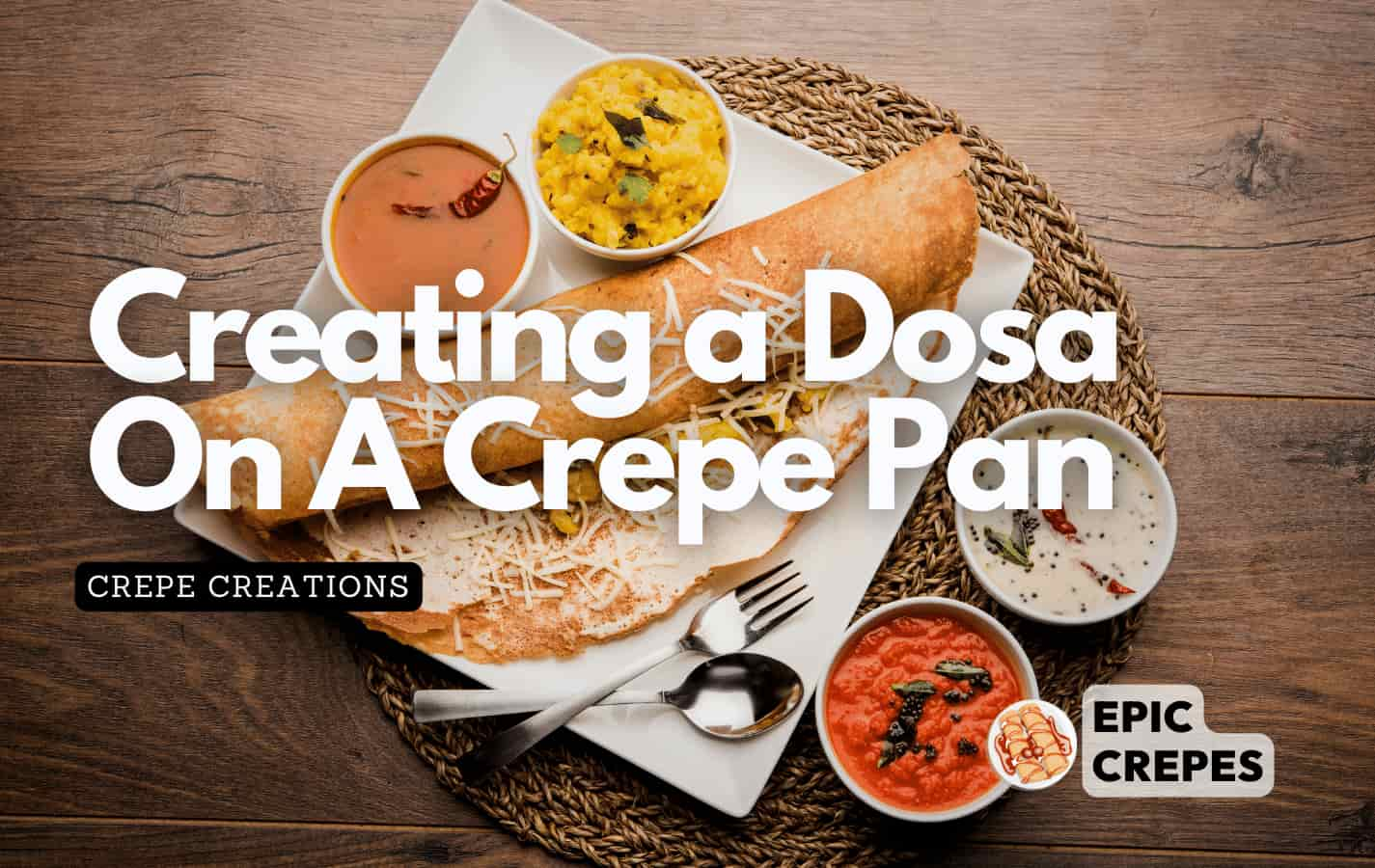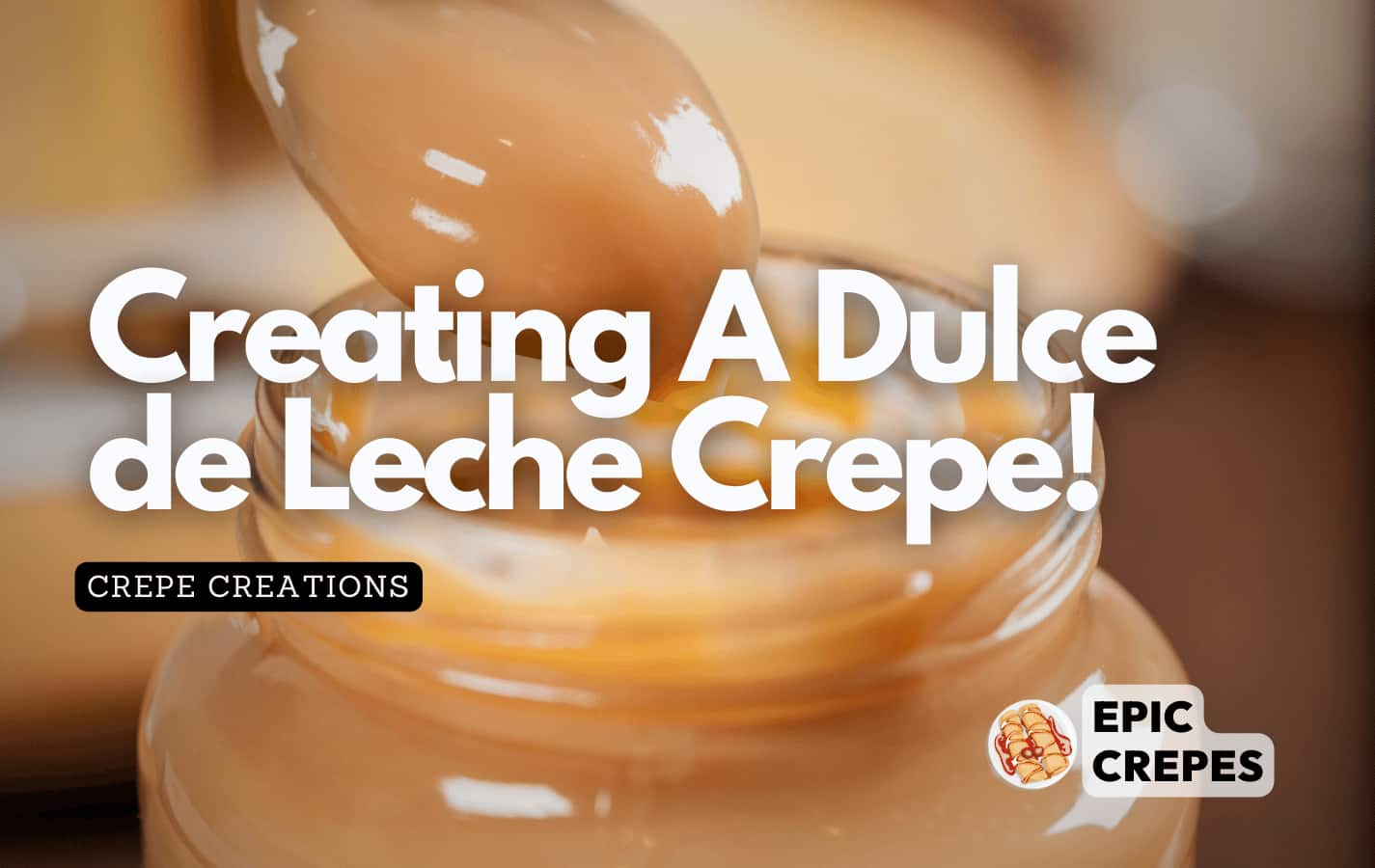Are you a fan of Indian cuisine? Do you often find yourself craving the crispy and savory goodness of a dosa but don’t have a traditional dosa tawa on hand?
Fear not, as it is possible to make dosas on a crepe pan! A crepe pan, which is typically flatter than a regular frying pan, can serve as an adequate substitute for a dosa tawa.
While the texture and taste may differ slightly from traditional dosas made on a specialized pan, using a crepe pan can still yield delicious results.
Keep reading to learn more about how to make dosas on your trusty crepe pan.
Understanding The Differences Between A Dosa Tawa And A Crepe Pan
As fate would have it, you find yourself craving a delicious and crispy dosa. But there’s just one problem: you don’t own a dosa tawa. Instead, you have a crepe pan sitting in your kitchen cabinet. You may be wondering, can you make dosa on a crepe pan?
Before we answer that question, let’s first understand the differences between a dosa tawa and a crepe pan.
A dosa tawa is typically made of cast iron or aluminum and has slightly raised edges to prevent batter from spilling over. It also retains heat well and distributes it evenly across the surface, allowing for uniform cooking.
On the other hand, a crepe pan is usually made of non-stick material and has low edges to facilitate flipping.
While both utensils have their benefits, using a dosa tawa is recommended if you want to make an authentic South Indian dosa. However, if you don’t have one on hand or are looking for an alternative option, using a crepe pan can work too. Just keep in mind that the outcome may not be exactly the same as using a traditional dosa tawa.
With that said, let’s move on to preparing your crepe pan for dosa making without compromising on taste and texture.
Preparing Your Crepe Pan For Dosa Making
Now that we have discussed the differences between a dosa tawa and a crepe pan, you may be wondering if it is possible to make dosa on a crepe pan. The answer is yes, it is definitely possible! In fact, many people prefer using a crepe pan for making dosas because it can be more versatile and easier to handle.
Before you start making dosas on your crepe pan, it is important to go through the seasoning process first. This involves heating up the pan and rubbing oil onto it several times until the surface becomes non-stick. Seasoning your crepe pan will help prevent your dosas from sticking to the surface and ensure even cooking.
It’s also important to note that not all types of crepe pans are suitable for making dosas – make sure to choose one with a flat surface and preferably made of cast iron or carbon steel.
Now that you’ve seasoned your crepe pan and chosen the right one for making dosas, the next step is to make your batter and spread it on the pan. This process can be tricky at first, but with practice, you’ll get the hang of it!
Start by pouring a small amount of batter onto the center of your heated pan and use a circular motion to spread it outwards into a thin layer. Once the edges start lifting up, flip over your dosa and let it cook for another minute or so before serving.
With these tips in mind, you’re now ready to start making delicious dosas on your trusty crepe pan! Just remember to take things slow at first and don’t get discouraged if your first few attempts don’t turn out perfectly – practice makes perfect!
Making The Dosa Batter And Spreading It On The Pan
I’ll need a few ingredients to make the dosa batter, like lentils, rice, and fenugreek.
After blending it, I’ll spread the batter on the pan with a ladle, making sure the heat and temperature are just right.
I’ll adjust the consistency with a spatula if needed, and add a bit of oil before flipping.
The technique is key to getting the perfect crispy dosa.
I’ll also need to consider the fermentation time and the heat of the pan.
Finally, I’ll know it’s ready when it’s crispy and golden brown, and I can start serving!
Ingredients
Have you ever wondered if you can make dosa on a crepe pan? It’s possible, and with the right ingredients, it can be just as delicious as making it in a traditional dosa pan.
Alternative dosa recipes have been gaining popularity recently, and one of them is using a crepe pan. But what are the essential ingredients needed for making the batter?
The main ingredient for dosa batter is rice, which is rich in carbohydrates and provides energy to the body. Brown rice or parboiled rice can be used instead of white rice to increase the fiber content and improve digestion.
Another crucial ingredient is urad dal, which is high in protein and low in fat, making it an excellent source of nutrition. Fenugreek seeds are added to enhance the flavor of the batter and also aid digestion.
Other optional ingredients that can be added to the batter include grated coconut, coriander leaves, ginger, or curry leaves. These add more flavor and aroma to the dish while providing additional health benefits such as aiding digestion, boosting immunity, and reducing inflammation.
By using these alternative dosa recipes with healthy ingredients like brown rice and urad dal will not only make your dosas tastier but also provide numerous health benefits that are essential for a balanced diet.
In conclusion, making dosa on a crepe pan requires almost identical ingredients as traditional dosas made on a griddle or tawa. However, adding nutritious alternatives to these ingredients not only enhances flavor but also provides significant health benefits such as improved digestion and increased immunity.
So next time you’re planning to make some crispy dosas at home, consider using healthier alternatives in your batter for an even more nutritious meal that you’ll enjoy!
Blending
Now that we’ve discussed the essential ingredients for making dosa batter, let’s move on to blending techniques.
There are different ways to blend the batter, and it often depends on personal preference. Some people prefer using a traditional stone grinder, while others use a high-speed blender or food processor.
If you’re using a blender or food processor to blend the batter, make sure to soak the rice and dal for at least six hours before blending. This will help in achieving a smooth consistency without any lumps. Additionally, you can add water gradually while blending until you get the desired thickness of your batter.
There are also ingredient options that can be added during the blending process to enhance the flavor of your dosas further. For instance, adding cumin seeds, green chilies, garlic cloves, or even spinach leaves can give your dosa an extra kick of taste and nutrition.
Blending these ingredients along with rice and dal creates a flavorful and nutritious batter that’ll make your dosas stand out from the rest!
Spreading
Now that we have discussed blending techniques, let’s move on to spreading the dosa batter on the pan. Spreading is an essential part of making dosas as it determines the shape and size of the dosa. Different spreading techniques can be used depending on personal preference, and each technique affects how crispy or soft the dosa will be.
One thing to keep in mind while spreading is the consistency of the batter. If the batter is too thick, it will not spread evenly on the pan and result in a lumpy texture. On the other hand, if it is too thin, it will spread too much and become difficult to handle. Therefore, achieving the right consistency is crucial to make perfect dosas.
To spread the batter evenly on the pan, use a ladle or a spoon and pour it onto the center of a heated pan. Then, using circular motions from inside outwards, spread the batter thinly and evenly across the surface of your pan.
It’s essential to maintain a low flame while spreading as it helps in getting an even texture throughout.
In conclusion, spreading techniques play a vital role in determining how your dosas turn out. Achieving an even thickness across its surface allows for an optimal crispiness while maintaining a soft center. So next time you make dosas at home, keep these tips in mind for perfectly-shaped and deliciously crispy dosas!
Tips And Tricks For Perfect Dosa Results On A Crepe Pan
To achieve perfect dosa results on a crepe pan, try these tips and tricks.
First, use an alternative cooking method such as preheating the pan at medium-high heat for 5-10 minutes before pouring the batter. This ensures that the dosa cooks evenly and doesn’t stick to the pan.
Secondly, experiment with different fillings to add variety to your dosa. Traditional fillings like potato masala or chutney can be replaced with ingredients like cheese, spinach or even Nutella! Just make sure that the filling is not too runny as it may cause the dosa to break apart.
Lastly, don’t be afraid to make mistakes while trying out new techniques or fillings. Learning comes from experimenting and trying new things. So, enjoy the process and have fun while making your perfect dosa on a crepe pan!
Frequently Asked Questions
What Is The Difference Between A Dosa Tawa And A Crepe Pan?
Differences and advantages exist when it comes to using a dosa tawa versus a crepe pan.
While both pans can be used for making thin, crispy flatbreads like dosas or crepes, there are some key differences to consider.
A dosa tawa is typically made of cast iron and has raised edges to contain the batter. It also retains heat well, allowing for even cooking and a crispy texture.
On the other hand, a crepe pan is usually made of nonstick material and has a flat surface with shallow sloping sides. This makes it easier to flip delicate crepes without tearing them.
Ultimately, whether you choose to use a dosa tawa or a crepe pan depends on personal preference and the type of dish you’re making.
How Should I Prepare My Crepe Pan For Dosa Making?
To prepare a crepe pan for dosa making, it’s important to follow the seasoning process to ensure that the batter doesn’t stick.
Interestingly, according to recent research, using a crepe pan instead of a traditional dosa tawa may actually result in a crispier and more evenly cooked dosa.
To make the most delicious dosa possible, be sure to use the best dosa recipes available and experiment with different fillings and toppings.
What Ingredients Do I Need To Make Dosa Batter?
To make dosa batter, you’ll need rice and urad dal (black lentils) as the main ingredients.
However, you can also experiment with alternative flours like chickpea, millet, or quinoa for a unique twist.
Soak the rice and urad dal separately for several hours before grinding them together into a smooth batter.
Once you’ve made the batter, store it in an airtight container in the refrigerator for up to a week.
Before cooking on your crepe pan or any other non-stick surface, be sure to lightly oil or grease it to prevent sticking.
Can I Use A Different Type Of Flour For My Dosa Batter?
Did you know that alternative flours such as chickpea, buckwheat, and quinoa are becoming popular ingredients for dosa batter variations?
These flours offer a gluten-free and nutritious option for those looking to switch up their traditional rice and lentil dosa batter.
While experimenting with different flours can be fun, it’s important to note that the texture and taste of your dosa may vary.
So, if you’re looking to make dosa on a crepe pan, remember that the type of flour you use will also impact the final result.
How Long Should I Cook My Dosa On The Crepe Pan?
When cooking dosa, it’s important to pay attention to the cooking time and temperature control.
The length of time you cook your dosa on a crepe pan will depend on factors such as the heat of your stove and the thickness of your batter.
Generally, you’ll want to cook each side for 2-3 minutes until it’s golden brown.
To get the perfect crispy texture, make sure not to flip too early or too often.
By monitoring the heat and timing, you’ll be able to create delicious dosa that are crispy on the outside and soft on the inside.
Conclusion
So, can you make dosa on a crepe pan?
The answer is yes! While a traditional dosa tawa is ideal for making this Indian staple, a crepe pan can work just as well. The main difference between the two is that a dosa tawa is typically thicker and has higher edges to prevent batter from spilling over.
To prepare your crepe pan for dosa making, simply heat it up on medium-high heat and lightly grease it with oil or ghee.
Once your batter is prepared (which can be made with rice flour, urad dal, water, and salt), pour it onto the pan and spread it out in circular motions using the back of a ladle.
Cook until lightly browned on both sides and serve hot with chutney or sambar.
For example, let’s say you’re hosting brunch for friends who have never tried Indian cuisine before. You decide to switch things up by making dosas on your trusty crepe pan instead of your usual pancakes.
Your friends are blown away by the unique flavor and texture of the dish, and you feel proud to have introduced them to something new.
With some practice, making dosas on a crepe pan can become part of your regular cooking routine!




